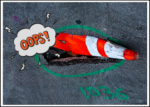Presenting Music Education Resources: 200+ Theory Worksheets & Handouts
Wow! I learned something new to help my students with major scale construction today! I’ve been around the musical block a few times myself but I have never encountered this little trick. Here in the U.S. we usually think of scales in terms of whole and half steps. Hence, WWHWWWH or we went home when we went home. But, if you think of scales in terms of the number of half steps or semi-tones, the pattern can be remembered as a phone number—221-2221. Personally, I think we Americans get too hung up on this tetrachord thing. It’s cool, it works, it’s symmetrical but most of my students use it for a month or so and move on—happily I might add.
Welcome to Music Education Resources, a collection of over 200 worksheets plus handouts/visuals in 23 categories by Robert Hylton. These materials are adaptable for any teaching situation—classroom, private, or small group. The package can be downloaded from Music Teaching Resources for $18 (US). There is no subscription fee. I was assured by the author that “teachers can download the stuff and use it in their one on one or classroom based lessons for ever! (provided they don’t change the laws of physics and discover a new note in there somewhere)”
The worksheet organizational categories are: 7th Chord Construction, Diatonic 7th Chords, Diatonic Triads Notation, Intervals, Key Signatures, Major Scales Letter Names, Major Scales Notation, Major Scales with Formula, Major Scales with Key Signatures, Minor Scales with Keyboard, Mixed major and Minor Scales, Mixed Scales, More Triad Worksheets, Pentatonic Major and Minor, Scales, Keys and 7th Chords, Scales, Keys and Chords, Scales within Scales, Guitar and Bass Chord Grids, Theory Handouts, Theory Tests, Triads and Diatonic Puzzles, and Understanding 7th Chords.
You will need Adobe Reader or Mac Preview to view the individual sheets. It will be necessary to change sheets from portrait to landscape view individually. I really wish the authors had done that before saving the files. Within the files I was given to review, there were also a couple of sheets in postscript and db format at which my Mac balked. That problem has now been fixed.
Some of the terms used are going to be new to many students in the U.S. (half-steps to semi-tones, fully diminished 7th to m7b5, etc), but I feel that this is easily handled by the teacher and in the long run students can only benefit from knowing their musical synonyms. Since I first posted this review, sheets with the term half and whole steps have been added to the collection. The sheets are clean and easy to read and a perfect size—totally appropriate for the younger crowd and not insultingly cute or overly large sized for an older student.
Instructions are straight and to the point. My students loved the fact that, except for the puzzles, each sheet contains just one type of task. They could concentrate and succeed without feeling overwhelmed by many steps. Many of the worksheets can easily be used first during the initial learning phase and then given again as a review or quiz. Be warned: there are no concept sheets included although some handouts/visuals are provided. Initial presentation of the material and connection to existing repertoire is up to the individual teacher.
In the intervals category, teachers are given the flexibility to stipulate whether any black keys should be considered as sharps or flats. Problems printed on keyboards have two answers when a black key is indicated. C to D# is an Augmented Second. C to Eb is a Minor Third. Students and teachers have been given a golden opportunity to compare and contrast interval sizes and what they look like on a keyboard and in notation.
Minor scales covered are confined to the natural and harmonic forms. Additionally there are worksheets covering major and minor pentatonic scales, a basic blues scale, and dorian mode. Handouts are provided which show each scale’s construction on a piano keyboard. Four “main” types of 7th chords are drilled in the worksheets. The half diminished chord (diatonic in harmonic minor) is left for more advanced study. Anyone who uses musical study programs which present 5 main types of 7th chords will need to supplement with worksheets which include half diminished 7ths.
Triads and 7th chords formulas are shown as Root, 3rd, 5th and the student will see b3rd or b5th for altered degrees. Unfortunately, the font doesn’t help the lowercase B look much like a flat. That is a generic font problem we all have (earlier in this post, myself included). I wish symbols had been inserted for clarity in this case.
The sheets can be given individually or organized into packets of single or mixed concepts. I find the way it is necessary to view the individual file folders on a computer cumbersome and would definitely recommend printing all the sheets and then organizing them in notebooks or folders according to your needs.
Overall, this is a gonga collection of resources. The sheer scale of material covered along with the number of sheets in this package is impressive. If you need a large variety of worksheets and handouts to help your students through the early levels of scale and chord construction and intervals, and don’t mind spending some up-front time studying the worksheets and deciding how best to use them, this packet is definitely the “lifetime of resources” for you!
!!! The website and materials have recently been updated- Take another look !!!



Thanks for the resources, very useful. I’ll add a link to this page on my site.
Check out this book which teaches this as well as how to learn chords… Really great reviews! http://www.chordpianoisfun.com